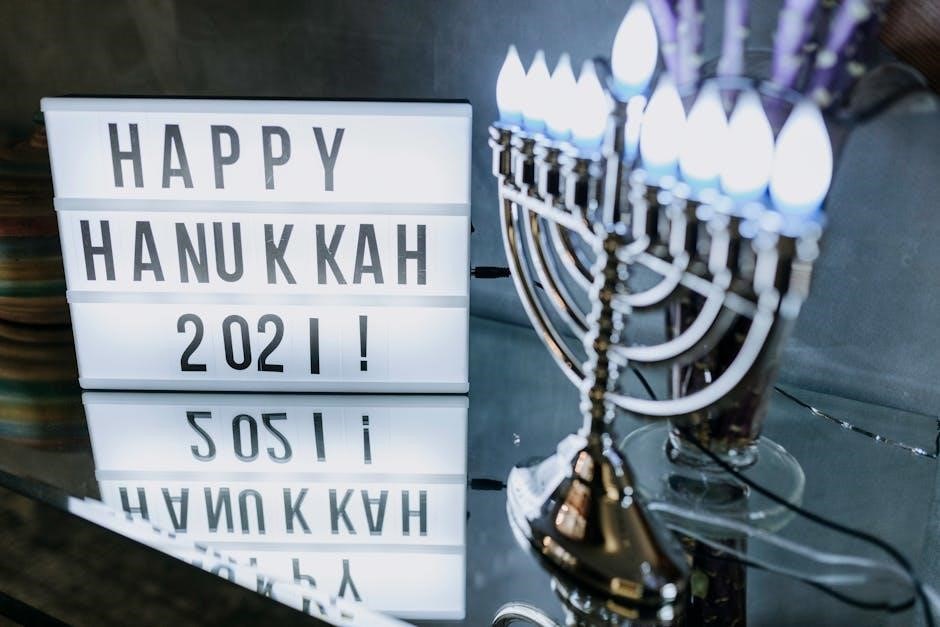Kings DCDC Charger Problems: A Troubleshooting Guide
Encountering issues with your Kings DCDC charger? This guide provides assistance in resolving common problems. It offers advice for troubleshooting steps‚ ensuring optimal performance and safety for your charging system.
Kings DCDC chargers are designed to efficiently charge auxiliary batteries in vehicles‚ utilizing power from either the alternator or solar panels. These chargers are commonly used in caravans‚ camper trailers‚ and other off-grid setups to maintain a reliable power supply. They offer multi-stage charging to optimize battery health and longevity‚ catering to various battery types‚ including AGM‚ lead-acid‚ and lithium LiFePO4 batteries.
These chargers often come equipped with features like MPPT solar regulators‚ allowing for efficient solar power harvesting. Understanding the capabilities and limitations of your specific Kings DCDC charger model is crucial for proper installation and operation. Ensuring compatibility with your battery type and solar panel setup is essential to prevent issues such as overheating‚ charging failures‚ and potential damage.
Proper setup involves selecting correct settings and following safety instructions outlined in the user manual. This introductory understanding will help in diagnosing and resolving any problems that may arise during use.

Common Problems with Kings DCDC Chargers
Kings DCDC chargers can encounter issues like overheating‚ charging failures‚ wiring problems‚ and compatibility concerns. Addressing these promptly ensures optimal performance and prevents further damage to your system.
Overheating Issues

Overheating is a prevalent concern with Kings DCDC chargers‚ often stemming from inadequate ventilation or excessive current draw. Confirm the charger is installed in a well-ventilated area‚ away from direct sunlight and heat sources. Check that the connected battery capacity aligns with the charger’s specifications.
Inspect wiring for any signs of damage or corrosion‚ as these can increase resistance and generate heat. Ensure proper crimping and secure connections to minimize voltage drop and heat buildup. Consider using appropriately sized heat shrink for protection.
If using solar panels‚ verify their voltage output does not exceed the charger’s maximum input voltage. Exceeding this limit can cause the charger to work harder‚ leading to overheating. Regularly monitor the charger’s temperature during operation and reduce load if overheating persists. Check for any obstructions hindering airflow around the unit. If problems continue‚ consult a qualified technician.

Charging Failures

Experiencing charging failures with your Kings DCDC charger can be frustrating. Begin by confirming that the charger is receiving power from the source (alternator or solar panel). Check input voltage to ensure it falls within the specified range. Inspect all fuses and breakers in the charging circuit for any signs of damage.
Verify the battery type selected on the charger matches the auxiliary battery you are using (AGM‚ Lithium‚ etc.). Incorrect settings can prevent proper charging. Ensure the ignition wire is properly connected if the charger requires it for activation.
Test the output voltage of the charger with a multimeter while it is supposed to be charging. If there is no output‚ the charger may be faulty. Check the connections to the auxiliary battery‚ ensuring they are clean and tight. If using solar panels‚ make sure they are producing adequate voltage and current. Review the solar regulator settings to ensure compatibility with the DCDC charger. If the issue persists‚ consult a professional.
Wiring Problems and Connections
Wiring issues are a common source of problems with Kings DCDC chargers. Start by inspecting all wiring connections for looseness‚ corrosion‚ or damage. Ensure all connections are securely tightened and properly crimped. Check for any signs of melted wiring‚ which could indicate overheating due to poor connections or undersized cables.
Verify that the wire gauge used is appropriate for the current being carried. Undersized wiring can cause voltage drop and heat buildup. Ensure proper grounding to prevent electrical noise and potential damage. Use appropriately sized heat shrink tubing to protect connections from moisture and corrosion.
Confirm that the positive and negative wires are connected to the correct terminals on both the charger and the battery. Reversed polarity can cause serious damage. If the charger has quick connect plugs‚ ensure they are fully seated and making good contact; Regularly inspect wiring and connections to maintain a reliable charging system. Consider professional help if unsure.
Compatibility Issues (Battery Type‚ Solar Panels)
Compatibility issues can significantly impact the performance of Kings DCDC chargers. Ensure the charger is compatible with the battery type being used (e.g.‚ AGM‚ Lithium LiFePO4). Using an incorrect charging profile can damage the battery or lead to inefficient charging. Verify that the charger’s settings match the battery’s voltage and charging requirements.
When using solar panels‚ check the panel’s voltage (Voc) and current (Imp) ratings. The panel’s Voc must not exceed the charger’s maximum input voltage. If using a solar panel with a regulator‚ ensure it is compatible with the DCDC charger. Confirm the solar panel’s output voltage is suitable for the charger’s input voltage range.
Incompatible solar panels can cause the charger to drop out or restart. For optimal performance‚ use solar panels with specifications that align with the charger’s capabilities. Regularly check compatibility to prevent damage and ensure proper function.

Specific Model Concerns
Different Kings DCDC charger models have their own specific issues. Understanding these individual concerns is vital for effective troubleshooting. Addressing model-specific problems ensures correct operation and extends the charger’s lifespan.

20A Model Issues
Owners of the Kings 20A DCDC charger often report specific problems related to its power output and heat management. Some users have observed that the charger struggles to maintain a consistent charging current‚ particularly when connected to solar panels with higher VOC (Voltage Open Circuit) exceeding the unit’s maximum input. This discrepancy can lead to the charger dropping out intermittently and restarting after a brief pause.
Furthermore‚ overheating is a prevalent issue‚ especially in warmer climates or when the charger is mounted in poorly ventilated locations. Overheating can cause the charger to shut down prematurely‚ preventing the auxiliary battery from fully charging. Wiring connections‚ particularly the Anderson plugs‚ should be inspected regularly for any signs of melting or corrosion‚ as these can contribute to voltage drops and reduced charging efficiency.
Compatibility with smart alternators can also be problematic‚ requiring adjustments to ensure proper charging behavior. Ignoring these concerns may result in irreversible charger damage.

25A Model Issues
The Kings 25A DCDC charger‚ while popular‚ presents its own set of challenges. Users frequently encounter issues related to its quick-connect plugs‚ which can sometimes become loose or corroded‚ leading to intermittent charging. The MPPT solar regulator‚ designed for efficient solar charging‚ may exhibit compatibility issues with certain solar panels‚ particularly those with a VOC exceeding the charger’s specified input voltage‚ which can cause the unit to shut down.
Additionally‚ some users have reported that the charger’s lithium compatibility mode doesn’t always function as expected‚ potentially leading to overcharging or undercharging of lithium batteries. Ensuring the correct battery type selection via the push-button interface is crucial. Overheating remains a concern‚ necessitating proper ventilation and monitoring‚ particularly in demanding conditions. Addressing these specific issues ensures optimal and safe performance of the 25A model.
40A Model Issues
The Kings 40A DCDC charger‚ designed for higher power applications‚ can experience unique problems. A common complaint involves the unit ceasing to charge auxiliary batteries after a short period‚ especially with smart alternators in vehicles like the BT50 or Ranger. This may be due to compatibility issues or voltage fluctuations‚ potentially leading to the charger “cooking” or emitting smoke‚ indicating internal damage.
Solar panel connectivity issues are also reported‚ where the charger fails to register the presence of a connected solar panel‚ despite proper wiring and voltage. Overvoltage from solar panels with a VOC exceeding the charger’s maximum input can cause shutdowns. Battery light flashing on the dashboard may indicate a charging problem or a fault within the charger itself‚ requiring careful diagnosis and testing. Ensuring proper grounding and secure connections is crucial for reliable performance.

Troubleshooting Steps
Diagnosing your Kings DCDC charger involves systematically checking components and connections. Validate input and output voltages‚ test with solar panels‚ and confirm smart alternator compatibility for effective troubleshooting.
Checking Voltage and Current Readings
Begin troubleshooting by meticulously checking voltage and current readings. Use a multimeter to verify the input voltage from the alternator or solar panels. Ensure it falls within the specified range of the Kings DCDC charger. Next‚ measure the output voltage at the auxiliary battery terminals to confirm the charger is delivering the correct voltage for the battery type (AGM‚ Lithium‚ etc.). Compare these readings to the expected values outlined in the charger’s manual.
Also‚ monitor the current flow to identify any inconsistencies. A sudden drop or fluctuation in current could indicate a problem with the charger‚ wiring‚ or the battery itself. Pay close attention to any error codes displayed on the charger’s monitor‚ as these codes often provide valuable clues about the nature of the fault. Document all readings for comparison.
Testing with Solar Panels
To diagnose solar panel related issues‚ start by verifying the solar panel’s open-circuit voltage (VOC) and comparing it against the Kings DCDC charger’s maximum input voltage. Exceeding this limit can damage the charger. Ensure the panels VOC isn’t above the DCDC maximum input voltage.
Next‚ check the current output from the solar panels using a multimeter while connected to the charger. A significantly lower current than expected may indicate panel degradation‚ shading‚ or wiring problems. Inspect all connections for corrosion or loose wires. Also‚ test the solar panel regulator (if present) to confirm it’s functioning correctly. Bypass the regulator temporarily to see if it resolves the issue‚ but only do so briefly and cautiously. Finally‚ test under optimal sunlight conditions to ensure accurate readings.
Smart Alternator Compatibility
Smart alternators‚ found in many modern vehicles‚ have variable voltage outputs that can cause issues with DCDC chargers. Confirm your Kings DCDC charger is compatible with smart alternators. Some models require a specific connection or setting adjustment to function correctly.
If experiencing intermittent charging or the charger failing to initiate‚ the smart alternator’s voltage may be too low or inconsistent. Try using a voltage stabilizer or a smart alternator interface module to provide a stable voltage to the DCDC charger.
Also‚ check the ignition wire connection‚ as some DCDC chargers require it to start charging with a smart alternator. Ensure the wire is properly connected and receiving a consistent signal. If problems persist‚ consult the Kings DCDC charger’s manual for compatibility details and recommended solutions for smart alternators.

Safety Advice
When working with electrical systems‚ safety should always be your top priority. Before troubleshooting your Kings DCDC charger‚ disconnect all power sources‚ including the vehicle’s battery and any solar panels. Always wear appropriate personal protective equipment‚ such as safety glasses and insulated gloves.
Ensure the work area is well-ventilated to prevent the build-up of any potentially hazardous gases. Never work on electrical systems while standing in water or on a damp surface. If you are not comfortable working with electrical systems‚ seek assistance from a qualified technician.
Double-check all wiring connections before re-energizing the system. Use properly sized fuses and circuit breakers to protect the charger and your vehicle’s electrical system. Regularly inspect wiring for any signs of damage or wear. If you notice any issues‚ replace the wiring immediately. Following these safety precautions will help prevent accidents and ensure a safe working environment.



